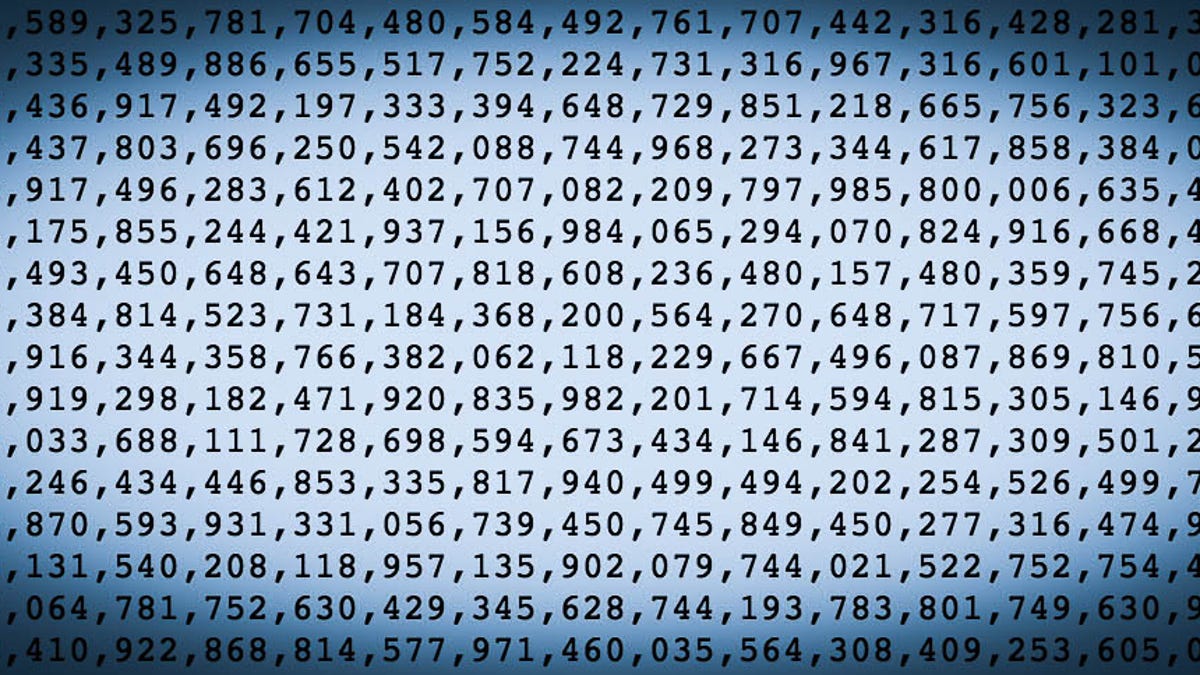Amateur effort finds new largest prime number
A Missouri professor, one of a team of nearly 100,000 volunteers, has found a highly unusual 17 million digit number -- and brought a prime-hunting project closer to a $150,000 prize.
The Great Internet Mersenne Prime Search (GIMPS) project has scored its 14th consecutive victory, discovering the largest prime number so far.
The number, 2 to the power of 57,885,161 minus 1, is a digit that's 17,425,170 digits long. That's big enough that if you want to see the full text, you'll have to brace yourself for a 22.5MB download.
GIMPS, a cooperative project splitting the search across thousands of independent computers, announced the find yesterday after it had been confirmed by other checks. At present, there are 98,980 people and 574 teams involved in the GIMPS project; their 730,562 processors perform about 129 trillion calculations per second.
The project has a lock on the market for mongo new prime numbers. The discoverer of this particular prime is Curtis Cooper, a professor at the University of Central Missouri who runs the prime-hunting software on a network of computers and who's found record primes in 2005 and 2006. It's not just his effort that's important, though; it relied also on others' machines ruling out other candidates.
A prime number is divisible only by itself and the number 1. Once a mathematical curiosity, primes now are crucial to encrypted communications. Mersenne primes are named after Marin Mersenne, a French monk born in 1588 who investigated a particular type of prime number: 2 to the power of "p" minus one, in which "p" is an ordinary prime number.
Cooper's find is the 48th Mersenne prime so far discovered. GIMPS has found the 14 largest Mersenne primes, the organization said.
Discovering Mersenne primes is not a get-rich-quick scheme, though Cooper won a $3,000 prize. It could be more lucrative at some point: An Electronic Frontier Foundation award of $150,000 will go to the discoverer of the first prime number with at least 100 million digits. It's already awarded prizes for primes 1-million and 10-million digits, and it's got a $250,000 prize queued up for a billion-digit prime.
GIMPS is steadily advancing on the bigger numbers.
In 1998, the project found 2^3021377-1, a number 909,526 digits long. By 2001, GIMPS found the 39th Mersenne prime, a number 4,053,946 digits long. The 43rd Mersenne prime, which Cooper's effort found, is a 9,152,052-digit numeral.
Searching for prime numbers is a project that can easily be split across countless computers through an idea called distributed computing. Not all computing chores are so amenable to cooperation, though.
Some of those labors, such fluid dynamics research that can be used to model nuclear weapons explosions or car aerodynamics, can be run on closely independent computing nodes connected by a high-speed network.
Other computing chores can't be broken down into parallel tasks at all, a problem given that power-consumption limits stalled processor clock speed increases in recent years.
A computer-science idea called Amdahl's Law, named after mainframe computer designer Gene Amdahl, shows the limits of parallel computation. If some portion of a computer program can't be sped up by parallel processing, at a certain point throwing more processors at the problem will stop producing any speedup in the computation.


